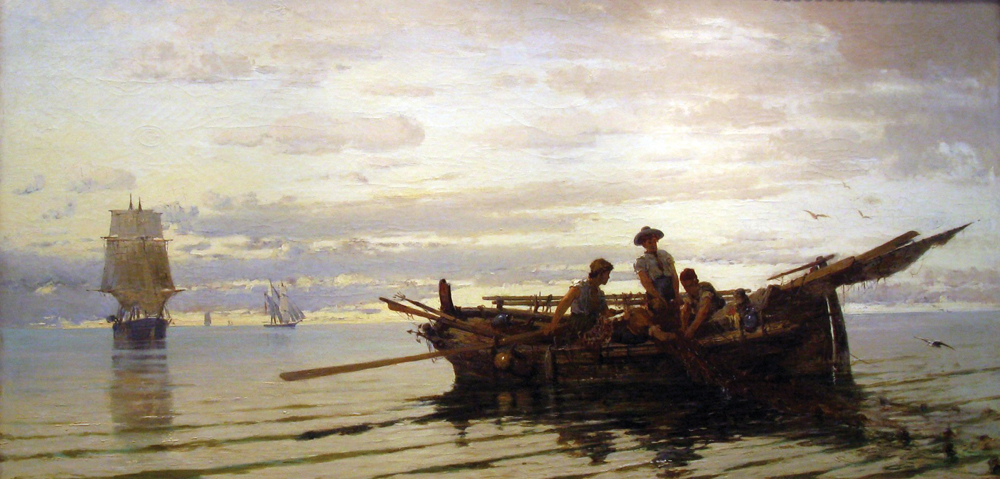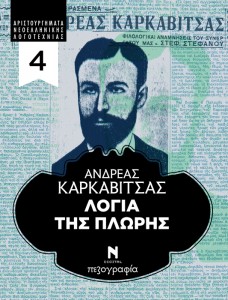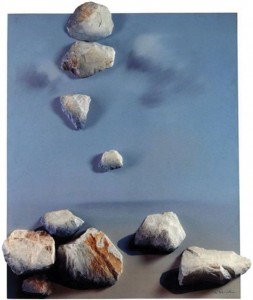The associations between Greek art and the sea are both too intricate to understand and too many to count, with the latter fueling an unceasing quest for creative expression. Whether a source of inspiration, a point of reference, or a threshold to experimentation, the sea casts its magic spell on the life and existence of Greek people, leaving its mark on art.
FOR ART’S SAKE ⁄ BY MARIANNA AVOURI

PAINTING
Seascapes occupy a prominent position in Greek painting, depicting the relationship between nature’s elemental forces and man’s will to master. Frequently considered an extension of landscape painting, Greek sea portraits are full of light and colour, capturing the ambiance and reality of island homelands, past and present. Seascape painting flourished in the nineteenth century, when acclaimed painters such as Konstantinos Volanakis (a.k.a. the father of Greek seascape painting), Ioannis Altamouras and Vassilios Hatzis produced wonderful works of impressionist art. Twentieth century’s well-known painter and academic, Panayiotis Tetsis was also a magnificent advocate of the post-impressionistic seascape tradition.
↑“Collecting the Nets” (1871)
Volanakis konstantinos (1837-1907)
MUSIC
The sea has always dominated Greek musical composition and song writing, especially in the case of the so-called “nisiotika” or island popular songs. These songs, which boast a unique and characteristic style, are played with local musical instruments, such as tsampouna, lyra, toubaki and laouto. Island songs are mostly about the travels at sea and almost always accompanied by folk dancing which is characterized by routines that imitate the movements of the sea waves (back-forth, calmly-intensely). Classical composition has not been unaffected by the Greek sea either. Nikos Skalkottas –one of the most important composers of the 20th cent.– was known for his unique compositions integrating elements of Greek popular music into classical repertoires. The most striking example of his commitment to Greek folk music is the series of “36 Greek Dances” in which he used genuine folk themes from the Greek islands and the mainland, and his symphonic overture “The Return of Ulysses”. Mikis Theodorakis, one of the greatest modern composers of all times, is also greatly inspired by the Greek sea. “Mia Thalassa“ (A Sea Full of Music), “Archipelagos” (Songs of the Islands), “Thalassina Feggaria” (Moons of the Sea), “O Ilios kai o Chronos“ (Sun and Time) and “Odysseia” are only a few examples of this great man’s visionary, internationally-acclaimed work which combines the classical symphonic elements with folk songs and influences from the byzantine music. And the list goes on…
The fine arts in Greece are simply
overwhelmed with interpretations,
depictions and symbolisms of the
sea, in any way, shape or form.

LITERATURE
Attempting to describe the Greeks’ relationship to the sea, from Homer’s anguish in “Odyssey” to Xenophon’s exaltation cry in “Anabasis” and the mastery of the sea displayed in the Classical period, one can safely assume that the sea has pervaded and still pervades all aspects of Greek life. Nobel prize winner, Odysseas Elytis, the so-called Poet of the Aegean, wrote extensively about the sea in his poems, complementing it with ethical powers. There is not a single one of Greece’s greatest writers that has refrained from citing the sea in his poems or works of prose. To mention only a few: Giorgos Seferis (Nobel prize in literature), Dionyssios Solomos (Greeks’ National Anthem poet), Yiannis Ritsos (9 times nominee for Nobel and winner of the Lenin Peace Prize), Kostas Varnalis (Lenin Peace Prize winner), Nikos Kavvadias, also known as the Poet of the Seas, Andreas Karkavitsas who wrote “Logia tis Ploris”; a maritime stories’ narrative, considered one of the masterpieces of Greek literature, and last but not least, the poet Nikos Gatsos who wrote the great contemporary poem “Amorgos”, especially notable for its combination of surrealism with traditional Greek folk poetry motifs.
SCULPTURE
The Greek sea mythology with its complex pantheon of gods, supernatural creatures and sea monsters has provided ancient sculpture with a wealth of thematic topics, like the figurines of Poseidon and Proteus. In recent times, most representative artists are the Greek sculptor Takis (a.k.a. as the father of modern visual art) who combines metal, wood and plastic to create inspired kinetic artworks, i.e. the “Pulses of the Sea”, and Costas Tsoklis, an internationally recognized and exceptionally prolific artist who boasts an impressive portfolio of 3,000 representational and semi-three dimensional artworks.

↑“Rocks”, Costas Tsoklis

